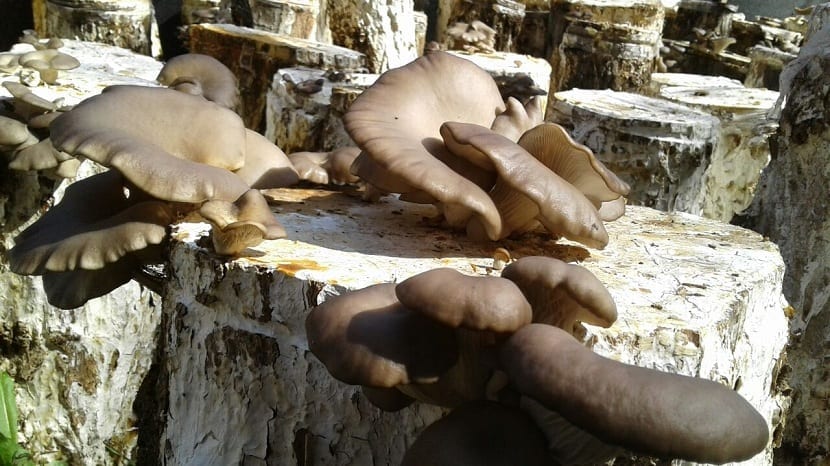
The gírgolas are kind of mushrooms that can be cultivated to later prepare some delicious cooking recipes. Its scientific name is oyster mushroom and it is widely distributed in all natural environments that are not greatly modified by the hand of man. In this post we are going to tell you about all the properties that gírgolas have, as well as how they are grown and the necessary requirements to maintain them.
Do you want to know more about these mushrooms? Read on to learn everything.
Key features
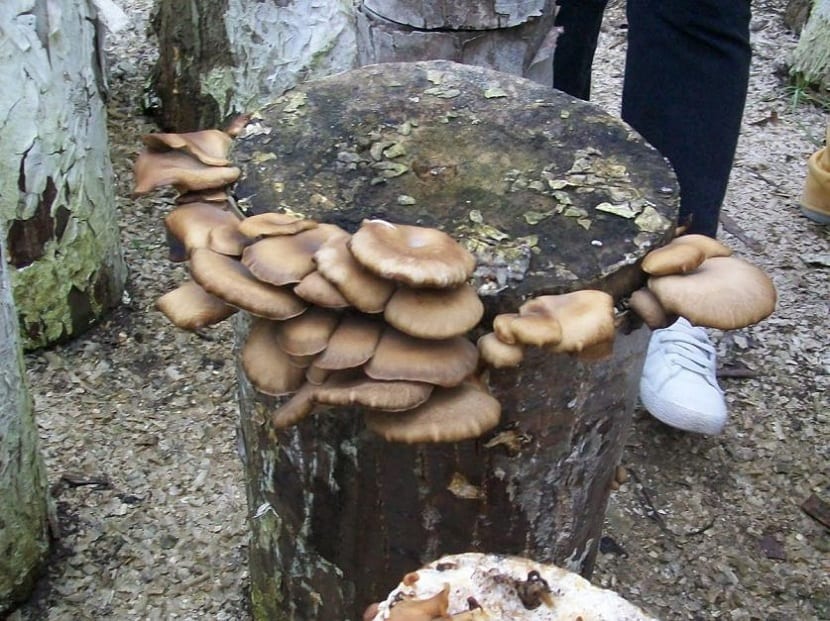
Gírgolas have a special characteristic and that is that they are capable of developing in the living or dead parts of plants that are poor in nutrients and vitamins. They do this by degrading organic matter. In general, they feed on cellulose and lignin that they remove from the substrate.
Thanks to the particularity of being able to grow in areas where there are other plants that are poor in nutrients or dead parts, it can develop in almost any substrate. It is possible to see them grow in substrates such as some agricultural residues, straws, reeds, stubble and even sunflower husks. They only require some small conditions to grow and it is not very demanding, so its survival capacity is high.
The hat you own can have dimensions ranging from 5 to 15 cm. When you see them well grown, they resemble the shapes of umbrellas. To know if it is young, you just have to look at its surface is more convex and, as it develops, it flattens until it reaches maturity. The fruiting body is quite irregular with a color that can vary from light gray to dark brown. We can find specimens with shades that vary between these two colors.
With regard to the lamellae, we can say that they are wide and creamy white. They are quite widely spaced from each other. It is in these lamellae that the spores that this fungus needs to reproduce are produced. The spores they generate are light gray in color and are released up to the top of the hat. They have a fairly short foot and may not be.
Reproductive cycle and nutritional value
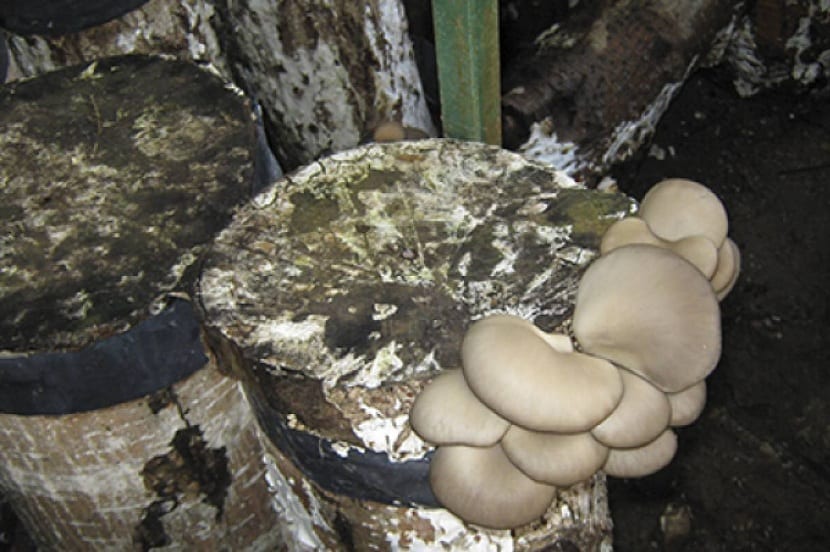
For this fungus to start the reproduction period, the adult individual has to start releasing the spores. For this situation, an ideal humidity and temperature is required so that it can germinate and give rise to a hypha. This hypha begins to grow and form a mycelium where the mushroom it develops little by little.
It can be said that the reproduction cycle ends when the mature fruit releases the spores again to begin germination again. This period usually lasts between 7 and 8 weeks in its optimal conditions.
The nutritional value varies a lot depending on whether they are cultivated or wild gyrgolas. In general, those that are grown on the trunk of a poplar are larger and darker than the wild ones. They also tend to have a firmer body. Contrary to them, those grown in wheat straw are smaller and more fragile. This is due to the amount of nutrients and the space they have to be able to develop better. The straw does not have a very large surface, unlike poplars. For this reason, the most common is that they are grown in areas where it has a greater reproductive success.
For every 100 grams of product we find 376 kcal and a composition of mostly carbohydrates. It has 18% protein and some good minerals such as phosphorus, calcium, magnesium, potassium, sodium and iron.
Gyrgolas cultivation
There are several ways to grow the gírgolas and they depend on the type of substrate where it is carried out and the type of management that is done to the environment where it is found. As we have mentioned before, we have several cultivation options depending on the substrate: the first is that of grow them on pieces of trees such as poplar and other trees belonging to the Salicaceae family. This way is one of the best and most used.
On the other hand, we have another cultivation method that is due to planting in areas of agro-industrial waste such as wheat straw, corn husks or some shavings or sunflower husks. To reduce the amount of contaminating microorganisms, some techniques such as pasteurization are used and they are enriched.
These two different types of crops are usually used depending on the area and the environment where they are. The first is that on the poplar trunk it is maintained with a greater exposure to the open air and the environment in which it will develop is hardly modified. With this cultivation system it is possible to increase seasonal production and a good development of the natural environment.
In the case in which techniques are used with the cultivation of agro-industrial waste, they refer to more intensive production systems and the environment is more controlled. However, for this type of production the initial investment grade is higher, which implies a risk in the final benefits.
Environmental requirements
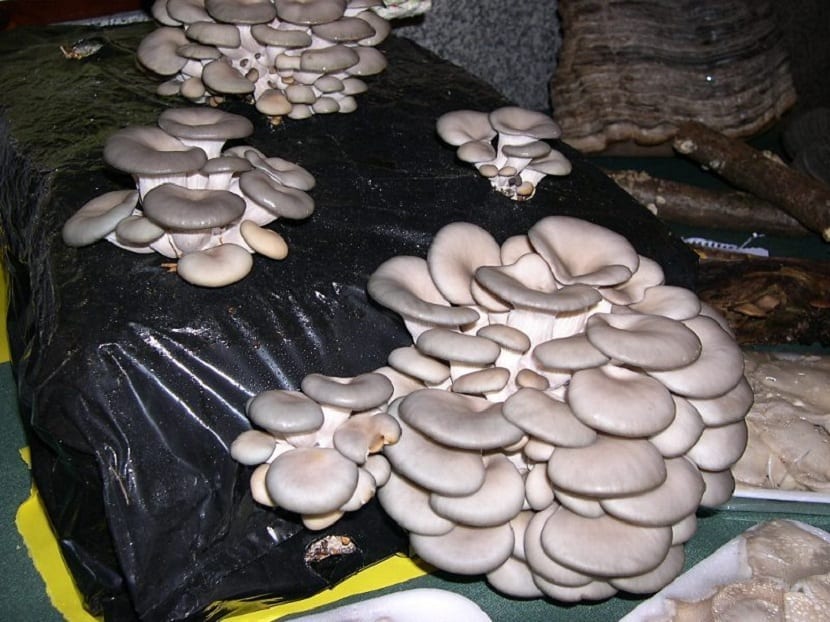
For gírgolas to grow healthily, a series of requirements must be met. Among them is the need for temperatures to be at a range that goes from 17 to 23 degrees. These temperatures normally occur in the fall season and somewhat in spring. Therefore, it is at this time when more production is obtained.
Now yes, humidity is the most demanding requirement. And, as we already know, the essential requirement for fungi is humidity. They require high humidity to be able to develop. The crop needs that the ambient humidity is at least 80%.
Once the cultivated gyrgolas have been collected, the lamellae must be placed upwards so that the spores that are released during their sexual maturity are stored on the upper side.
I hope this information helps you learn more about gyrgolas and their cultivation.
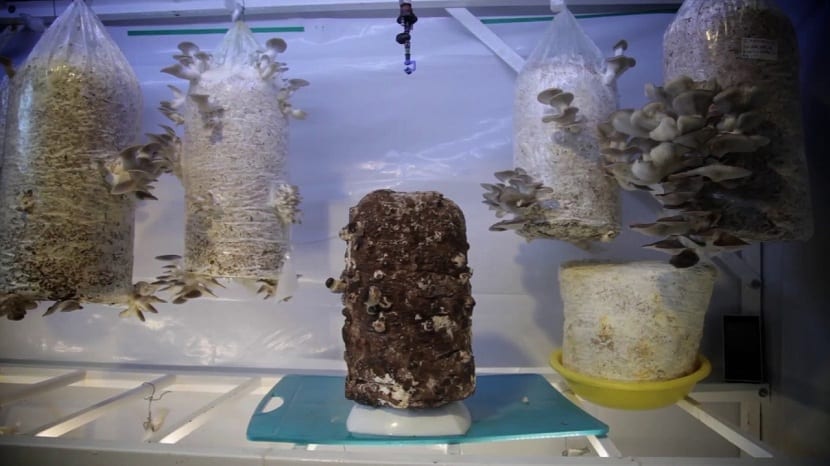
Sorry, but what is the recommended pH of the place where they are being grown?